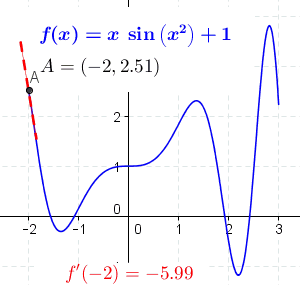I've read the whole Wikipedia page on the slope, and it says the slope of a line is a number that describes1 both the steepness and the direction of the line. It is a measure of how steep a line is. Then the article proceeds to state the formula for calculating the slope of a line — the-rise-over-run formula.
Is the above definition of slope complete? That is when I learn Advanced Mathematics, will I have to listen to the same-old saying "actually this is not entirely true"? Assuming it is complete, why is rise-over-run a measurement of it? In other words, how did mathematicians conclude that, okay, this is the measure of the steepness of a line?
Then there is the rate of change of a function. If we find the rate of change of a linear function, then we see that it is actually the slope of that line. Is this an accident? How do the slope of a straight line and the rate of change of a function relate together? I want to know the rigorous answer. Thank you.
- And I don't know what "describe" means in this context. So, this would help if you could answer that too.

Best Answer
Assume you would want to tell someone how steep a road is, in quantitative terms. As that information is independent of the length of the road, it is essentially an angle, such as $\alpha$ on the picture.
But in many situations, measuring the angle is inconvenient and it is easier to measure displacements, and ratios of displacements are independent of the length. Hence equivalently, steepness can be characterized by one of
$$\alpha,\frac{CB}{AB}, \frac{CB}{AC}.$$
(I don't mean that these have equal values, but one gives the others.) $\dfrac{CB}{AC}$, called the slope, is often preferred and indeed represents a rate of change: how much do you displace vertically for a given horizontal displacement ?
In the case of a nonlinear function, the vertical displacement is not proportional to the horizontal one. To work around this, we consider the local slope, i.e. the slope of the tangent to the curve at the point of interest.